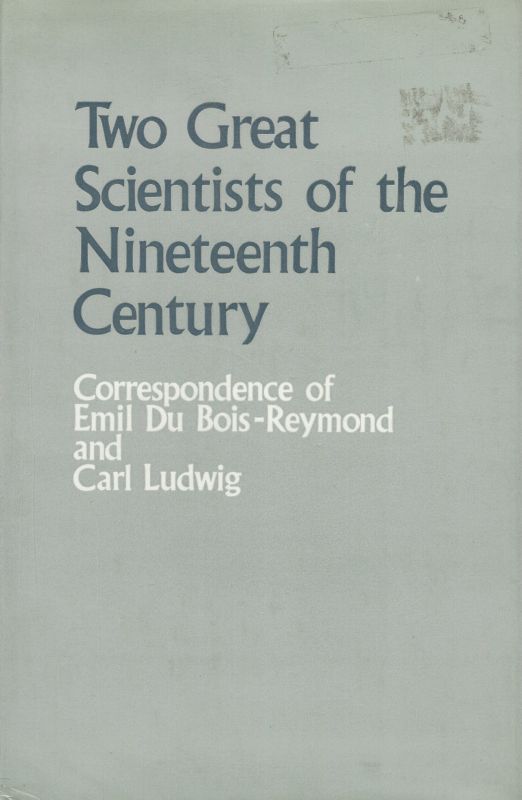Cranefield, Two Great Scientists of the Nineteenth Century. Correspondence of Em
Two Great Scientists of the Nineteenth Century. Correspondence of Emil Du Bois-Reymond and Carl Ludwig. Collected by Estelle Du Bois-Reymond. Foreword, Notes, and Indexes by Paul Diepgen. Translated by Sabine Lichtner-Ayed. Edited, with a Foreword, by Paul F. Cranefield.
Baltimore, The John Hopkins University Press, 1982. 16 x 24 cm. 183 pages. Original Hardcover with original dustjacket in protective collector’s mylar. Very good+ condition. Inside very clean and fresh.
Emil du Bois-Reymond (November 7, 1818 – December 26, 1896) was a German physician and physiologist, the discoverer of nerve action potential, and the father of experimental electrophysiology.
Carl Friedrich Wilhelm Ludwig (29 December 1816, Witzenhausen – 23 April 1895, Leipzig) was a German physician and physiologist.
In 1842 Ludwig became a professor of physiology and in 1846 of comparative anatomy. From professorships in Zurich and Vienna he went in 1865 to the University of Leipzig and developed there the Physiological Institute, designated today after him: Carl Ludwig Institute of Physiology.[1] Ludwig researched several topics such as the physiology of blood pressure, urinary excretion and anesthesia. He received the Copley Medal in 1884 for his research. In 1869, he was elected a foreign member of the Royal Swedish Academy of Sciences. He is credited for inventing the stromuhr.
Since 1932 the Carl Ludwig Honorary Medal is awarded by the German Society for Cardiology to outstanding investigators in the area of cardiovascular research. (Wikipedia)
- Keywords: Debates · Exchanges · History of Science · Philosophy of Science
- Language: English
- ISBN: 080182351X
- Dust Jacket
- Inventory Number: 23843AB
EUR 68,--
© 2025 Inanna Rare Books Ltd. | Powered by HESCOM-Software










